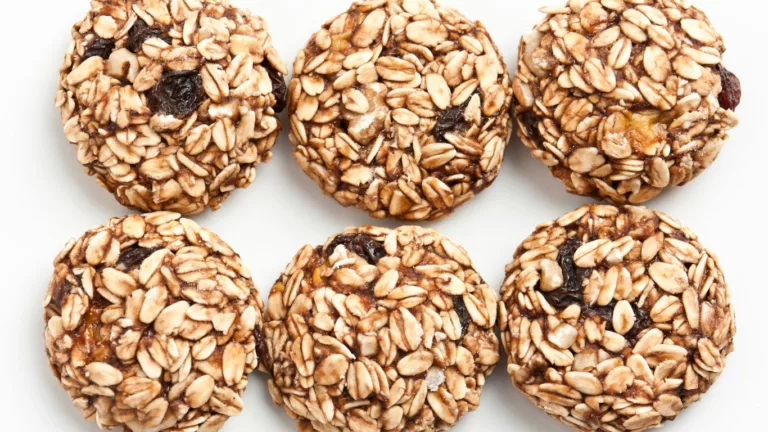Best Asthma-Friendly Meal Planning Tips for Healthier Breathing
As a pulmonary nurse, I’ve seen firsthand how diet plays a significant role in managing asthma. Many of my patients ask me, “What are the best asthma-friendly meal planning tips?” And honestly, it’s a game-changer when you focus on what you eat! The right foods can help reduce inflammation, strengthen your immune system, and even improve lung function. But let’s be real—meal planning isn’t always easy, especially when trying to avoid common asthma triggers like processed foods and dairy. So, let’s break it down and make it simple!
Why Your Diet Matters for Asthma Management

When I first started working with asthma patients, I was surprised at how much diet affected their symptoms. It’s not just about avoiding specific foods—it’s about choosing the right nutrients that support lung health and reduce inflammation. Let’s take a closer look at why what you eat matters.
Foods That Trigger Asthma Symptoms
Some foods can worsen asthma symptoms, and I’ve seen it happen in real-time with my patients. Here are some common culprits to watch out for:
- Dairy products: Can increase mucus production in some people.
- Processed foods: Often contain preservatives like sulfites, which may trigger asthma attacks.
- Fried and fast foods: High in unhealthy fats that can increase inflammation.
- Artificial additives: Some people are sensitive to food colorings and preservatives.
Best Foods for Asthma-Friendly Meal Planning
Now, let’s talk about the good stuff—foods that can actually help with asthma management. I always tell my patients to focus on anti-inflammatory, nutrient-rich foods that support lung function.
- Leafy greens: Spinach, kale, and Swiss chard are rich in antioxidants.
- Fatty fish: Salmon and mackerel contain omega-3s that help reduce inflammation.
- Vitamin C-rich fruits: Oranges, strawberries, and bell peppers support the immune system.
- Turmeric and ginger: Natural anti-inflammatory spices that help open up airways.
How to Plan Asthma-Friendly Meals Like a Pro

Planning meals that support lung health doesn’t have to be complicated. I’ve worked with countless patients to develop meal plans that are easy to follow and packed with the right nutrients. Here are my go-to strategies:
1. Balance Your Macronutrients
I always tell my patients that a balanced plate is key. You want a mix of protein, healthy fats, and complex carbohydrates to keep your energy levels steady and your lungs happy.
- Protein: Lean meats, fish, beans, and legumes.
- Healthy fats: Avocados, nuts, olive oil.
- Complex carbs: Whole grains, quinoa, sweet potatoes.
2. Prep Your Meals in Advance
Life gets busy, and I totally get it! That’s why meal prep is a game-changer. Spend a couple of hours each week prepping ingredients, so you’re not scrambling for meals at the last minute. Here’s a simple plan:
- Chop up fresh veggies and store them in airtight containers.
- Cook a batch of quinoa or brown rice for quick meal assembly.
- Grill or bake lean protein sources in advance.
- Portion out healthy snacks like nuts and fruit.
3. Hydration is Key
I can’t stress this enough—staying hydrated is essential for people with asthma. Dehydration can thicken mucus, making it harder to breathe. Aim for at least 8 glasses of water a day, and try adding herbal teas or infused water for variety.
Smart Grocery Shopping for an Asthma-Friendly Diet

One of the best things you can do for your health is to stock your kitchen with the right foods. Here’s how to shop smarter and make asthma-friendly choices at the grocery store.
Stick to the Perimeter of the Store
Ever notice that the healthiest foods are usually found along the perimeter of the grocery store? Fresh produce, lean meats, and dairy alternatives are all found there. Try to limit trips to the middle aisles, where processed and packaged foods lurk.
Read Labels Like a Pro
Many of my patients are shocked to learn how many hidden additives are in their favorite foods. Always check the ingredient list and watch out for:
- Sulfites: Found in dried fruits, wine, and some processed foods.
- MSG: A common additive in fast food and snacks.
- Artificial sweeteners: Can cause inflammation in some people.
Build a Weekly Shopping List
Having a plan before heading to the store can help you make better choices. Here’s a simple example of what an asthma-friendly shopping list might include:
- Fruits & Vegetables: Apples, berries, leafy greens, bell peppers.
- Proteins: Chicken, turkey, salmon, lentils.
- Healthy Fats: Olive oil, nuts, seeds, avocado.
- Whole Grains: Brown rice, quinoa, oats.
- Herbs & Spices: Turmeric, ginger, garlic.
Easy and Delicious Asthma-Friendly Recipes

Now that we’ve covered the best asthma-friendly meal planning tips, let’s get to the fun part—cooking! I always remind my patients that eating healthy doesn’t mean boring or bland meals. You can still enjoy flavorful, satisfying dishes while keeping asthma triggers at bay.
1. Anti-Inflammatory Turmeric & Ginger Smoothie
When I’m in a rush but still want to get some lung-friendly nutrients, this smoothie is my go-to. It’s packed with anti-inflammatory goodness and tastes amazing.
- Ingredients:
- 1 cup almond milk
- 1 banana
- ½ teaspoon turmeric
- ½ teaspoon ginger
- 1 teaspoon honey
- ½ cup frozen mango
- Ice cubes (optional)
Directions: Blend all the ingredients until smooth. Pour into a glass and enjoy!
2. Omega-3 Rich Baked Salmon with Garlic & Lemon
Salmon is one of the best foods for asthma because of its omega-3 fatty acids, which help reduce inflammation in the airways. Plus, it’s super easy to prepare!
- Ingredients:
- 1 salmon fillet
- 1 tablespoon olive oil
- 2 garlic cloves, minced
- Juice of ½ lemon
- Salt and pepper to taste
Directions: Preheat oven to 375°F (190°C). Place salmon on a baking sheet, drizzle with olive oil, and top with minced garlic, lemon juice, salt, and pepper. Bake for 15-20 minutes. Serve with a side of roasted veggies.
3. Warm Quinoa & Roasted Veggie Bowl
Quinoa is a fantastic source of protein and fiber, and it pairs perfectly with roasted vegetables. This dish is filling, nutritious, and perfect for meal prep.
- Ingredients:
- 1 cup cooked quinoa
- 1 zucchini, sliced
- 1 bell pepper, chopped
- 1 carrot, chopped
- 1 tablespoon olive oil
- Salt, pepper, and garlic powder to taste
Directions: Toss the veggies with olive oil and seasonings. Roast at 400°F (200°C) for 20 minutes. Serve over cooked quinoa and enjoy!
Understanding the Link Between Gut Health and Asthma

Something I’ve noticed in my years of working with asthma patients is that gut health plays a major role in overall respiratory health. Many people don’t realize that an unhealthy gut can actually make asthma symptoms worse.
How Gut Bacteria Affect Inflammation
Our gut is home to trillions of bacteria, both good and bad. When the balance is off—meaning there are more bad bacteria than good—it can lead to increased inflammation throughout the body, including the lungs.
Some of my patients have seen improvements in their asthma symptoms after making changes to support their gut health. The key is to incorporate more probiotic and prebiotic foods into your diet.
Best Foods for a Healthy Gut
- Probiotics: Found in yogurt (dairy-free options work too!), kimchi, sauerkraut, and kefir.
- Prebiotics: Foods like garlic, onions, bananas, and asparagus help feed the good bacteria in your gut.
- Fiber-rich foods: Whole grains, beans, and vegetables support digestion and gut health.
Foods to Avoid for Better Gut Health
Just like there are foods that help, there are also foods that can hurt your gut health. Processed foods, artificial sweeteners, and excessive sugar can disrupt your gut microbiome and contribute to inflammation.
Simple Lifestyle Changes to Support an Asthma-Friendly Diet

Beyond just food, there are other simple lifestyle tweaks that can make a big difference in asthma management. These are small, practical changes I always recommend to my patients.
1. Eating Smaller, More Frequent Meals
Overeating can put pressure on the diaphragm, making it harder to breathe. Instead of eating three big meals a day, try breaking them up into smaller, more frequent meals. This keeps your energy levels stable and helps with digestion.
2. Cooking at Home More Often
Let’s be honest—restaurant food is delicious, but it’s often loaded with salt, unhealthy fats, and preservatives. Cooking at home gives you complete control over ingredients, helping you avoid hidden triggers.
3. Managing Stress Through Mindful Eating
Did you know stress can actually worsen asthma symptoms? When we’re stressed, our bodies release hormones that can cause inflammation. Practicing mindful eating—like slowing down, chewing thoroughly, and appreciating your food—can help reduce stress and improve digestion.
4. Keeping a Food Journal
One of the best ways to identify potential food triggers is to keep a food journal. Jot down what you eat and how you feel afterward. Over time, you might start noticing patterns that can help you make better food choices.
Common Myths About Asthma and Diet

One thing I hear all the time from my patients is, “I read that cutting out dairy will cure my asthma” or “Spicy foods trigger attacks, right?” There are so many misconceptions floating around about asthma and diet, and it’s time to set the record straight. Let’s debunk some of the most common myths!
1. Myth: Dairy Always Triggers Asthma
I can’t tell you how many times I’ve had patients tell me they avoid dairy completely because they think it worsens their symptoms. The truth? Dairy doesn’t trigger asthma for everyone. While some people are sensitive to it and might experience increased mucus production, others can tolerate dairy just fine. If you’re unsure, try keeping a food diary to see how your body reacts.
2. Myth: Spicy Foods Can Cause an Asthma Attack
This is a tricky one. Spicy foods can sometimes trigger coughing or make your nose run, but they don’t necessarily cause asthma attacks. In fact, some spices like turmeric and ginger actually have anti-inflammatory properties that can help with asthma management. That being said, if you notice spicy food makes your symptoms worse, it’s best to limit them.
3. Myth: Organic Foods Are the Only Safe Option
While organic foods can be a great choice because they contain fewer pesticides and additives, they aren’t a requirement for asthma-friendly eating. The key is to focus on whole, unprocessed foods, whether organic or not. Washing fruits and vegetables thoroughly can also help reduce exposure to potential irritants.
Eating Out with Asthma: Tips for Making Safe Choices

Let’s be honest—sometimes, you just want to enjoy a meal at a restaurant without stressing about asthma triggers. The good news? It’s totally possible! Over the years, I’ve learned a few tricks to make dining out a smoother experience.
1. Check the Menu Beforehand
Before heading out, take a few minutes to scan the restaurant’s menu online. Look for fresh, whole food options and avoid dishes that contain common asthma triggers like processed meats, excessive dairy, or artificial additives.
2. Ask About Ingredients
Never be afraid to ask how a dish is prepared! Many restaurants are happy to modify meals to accommodate dietary restrictions. I always recommend requesting sauces and dressings on the side, as they can sometimes contain preservatives that might trigger asthma symptoms.
3. Avoid Deep-Fried Foods
As tempting as fried food can be, it’s best to skip it when you have asthma. Fried foods are high in unhealthy fats, which can contribute to inflammation. Opt for grilled, roasted, or steamed options instead.
4. Carry Your Inhaler Just in Case
This might sound like common sense, but you’d be surprised how many times I’ve heard patients say they left their inhaler at home! Even if you’re eating at a trusted restaurant, it’s always best to have your rescue inhaler on hand—just in case.
How to Make Long-Term Dietary Changes Stick

Making the switch to an asthma-friendly diet is one thing, but sticking with it long-term is another challenge. I’ve seen so many patients start off strong, only to fall back into old habits after a few weeks. The secret? Small, sustainable changes!
1. Start with One Change at a Time
Trying to overhaul your entire diet overnight can feel overwhelming. Instead, focus on one change at a time. For example, start by swapping out processed snacks for fresh fruit, then move on to incorporating more omega-3s into your meals.
2. Meal Prep for Success
We’ve talked about meal prepping before, but I can’t stress enough how much easier it makes healthy eating! Having prepped meals and snacks ready to go eliminates the temptation to grab something unhealthy when you’re short on time.
3. Make It Enjoyable
Healthy eating doesn’t have to be boring! Experiment with new recipes, try out different spices, and find meals that you actually look forward to eating. The more enjoyable the experience, the easier it will be to maintain.
4. Listen to Your Body
Everyone’s body reacts differently to foods. Pay attention to how certain meals make you feel and adjust your diet accordingly. If you notice a certain food consistently causes discomfort or worsens your symptoms, it might be best to cut it out.
Final Thoughts on Asthma-Friendly Meal Planning
Managing asthma through diet is a powerful and effective approach. While there’s no single “magic” food that will cure asthma, making smart dietary choices can significantly reduce inflammation, improve lung function, and boost overall health. The key is consistency—small changes add up over time!
If you’re just starting out, take it one step at a time. Swap out processed foods for whole, nutrient-dense options, incorporate more omega-3s and antioxidants into your meals, and pay attention to how your body responds. And of course, always consult with a healthcare professional before making major dietary changes.
References
- National Center for Biotechnology Information
- Mayo Clinic
- Centers for Disease Control and Prevention
- Asthma and Allergy Foundation of America
Disclaimer
This article is for informational purposes only and is not intended to replace medical advice. If you have asthma or any other respiratory condition, consult with a healthcare provider before making dietary changes.

Bianca Nala is a compassionate Nurse Practitioner with a strong background in primary and respiratory care. As a health writer for Healthusias.com, she combines her clinical expertise with a talent for clear, relatable storytelling to help readers better understand their health. Bianca focuses on topics like asthma, COPD, chronic cough, and overall lung health, aiming to simplify complex medical topics without losing accuracy. Whether she’s treating patients or writing articles, Bianca is driven by a single goal: making quality healthcare knowledge accessible to everyone.






